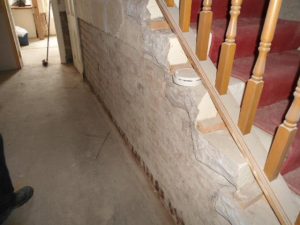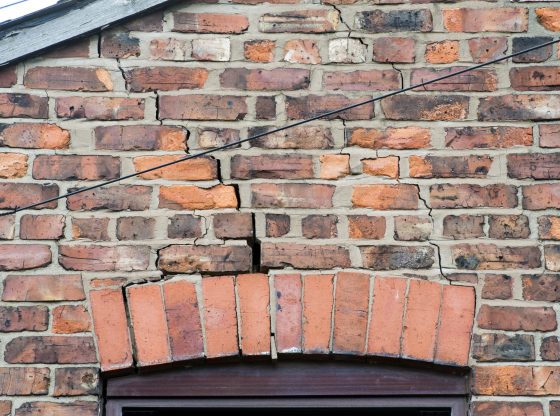So you’ve found your dream home; killer location, three bedrooms, rich hardwood floors, big bay windows, and everything else you’ve ever wanted. Then the estate agent utters those three words that no prospective buyer wants to hear, “history of subsidence.” What now? Do you tear yourself away from your dream home and start looking elsewhere, or do you soldier on, hoping that it won’t be too much of a problem?
Don’t commit either way too soon. A house can be an excellent investment or a huge money sink, and you need to plan and find out as much information as you can before buying. Phrases like ‘moderate risk of subsidence’ can be a shock, especially if this your first home. Images will be popping into your head, of a huge hole opening up and swallowing your house, but you shouldn’t become too alarmed. Before you make a decision, take these steps.
Structural survey.
Your next step should be to get a full structural survey done, by a certified surveyor. The estate agent may have information on the structural health of the building, but the more up-to-date your information is, the less likely you are to receive a nasty shock down the line.
A thorough survey by a chartered surveyor will highlight any areas of risk and ensure that nothing is missed; cracks, stuck windows, rucked wallpaper. These, among other signs, are subtle and can be missed or misinterpreted as other problems. You might also need a specialist geographical or drainage survey – some subsidence is caused by broken or malfunctioning plumbing washing away ground soil.
Insurance.
This is one of the main deterrents to prospective buyers of houses with subsidence, due to the increase in premiums. The excess can be as much as £5000, a five times increase over a standard policy of £1000.
The risk later on, if you do decide the larger insurance premium is worth it, is that the house will be more difficult for you to sell because buyers will be put off by the higher insurance cost. If you get repairs carried out, however, you can go to specialist insurers who may offer you lower premiums.
Some insurers will lower the premiums if you take advice from experts on certain aspects of the house which are causing subsidence. For example, advice from drainage experts on possible water damage, or advice from an arboriculturist on any thirsty trees you have nearby, which can suck up moisture from the soil and cause it to collapse.
Repairs.
If the house has suffered from subsidence, then it might require repair or ground stabilisation to ensure that you can live in it and the subsidence won’t get any worse. After the survey, when subsidence damage has been logged, you can look over how much it will cost to repair. Think about possible repairs before you buy. Consider how much you would be willing to spend on repairs if it came down to it. Depending on the severity of the structural damage, repairs could set you back hundreds or thousands.

Do not rush into rejecting or buying a house. Get a survey done by a professional, chartered surveyor and go from there. Decide if the increase in insurance and any costly crucial repairs are worth it. Finally, always keep in mind, if you think you will go on to sell the house one day, that any future buyer will have the same information as you, about the history of subsidence at the property.

